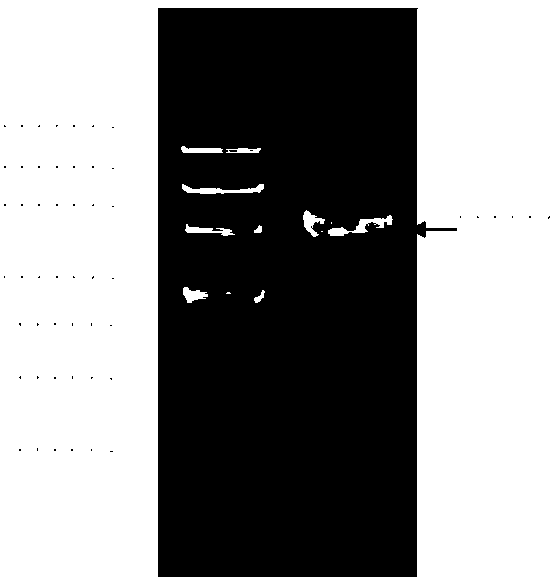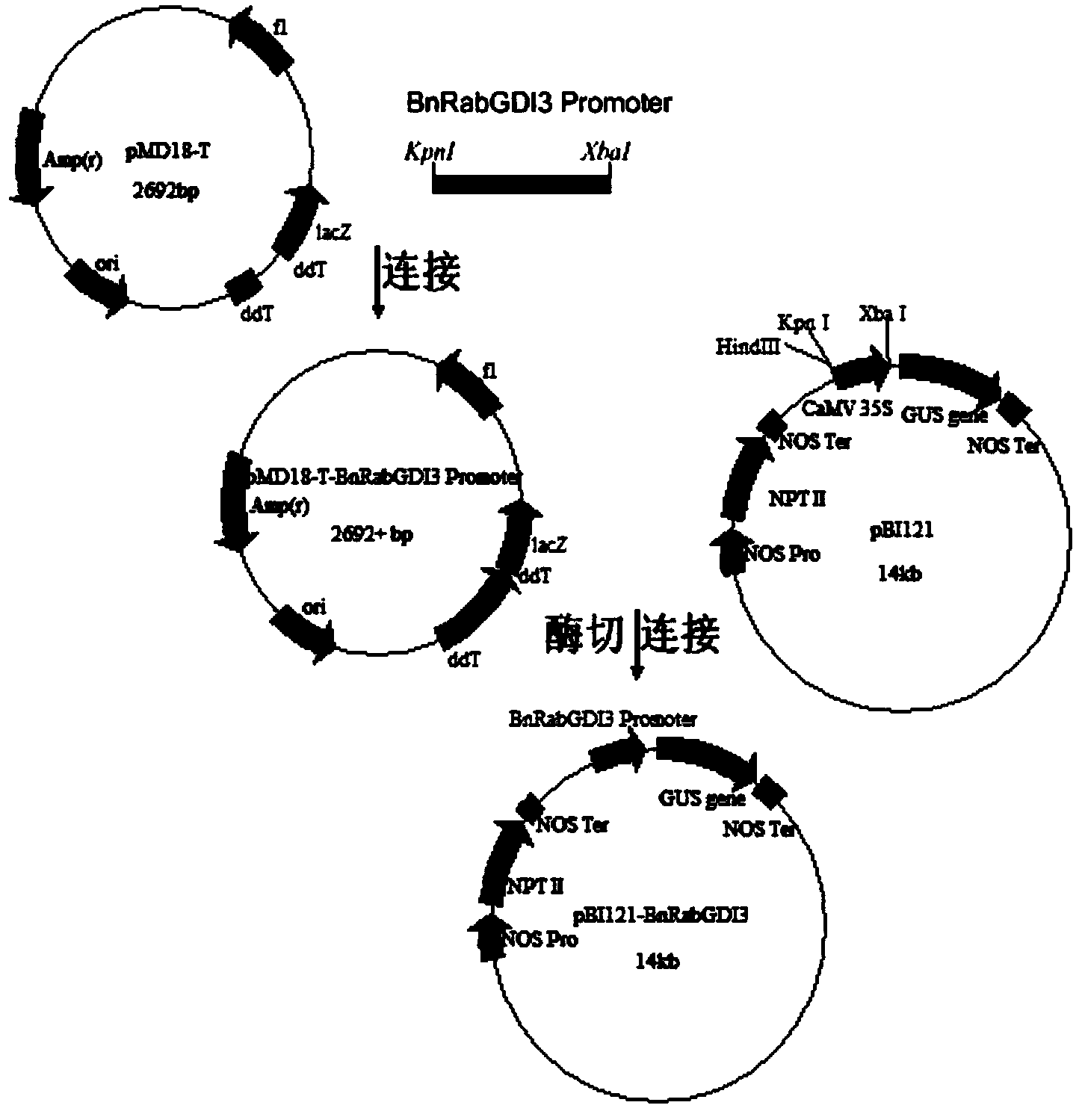Preparation method and applications of rape BnRabGDI3 promoter
A promoter and purpose technology, applied in the field of plant genetic engineering and biology, can solve problems such as unsuitable for production practice, unfavorable for normal plant growth, and harmful to the ecological environment
- Summary
- Abstract
- Description
- Claims
- Application Information
AI Technical Summary
Problems solved by technology
Method used
Image
Examples
Embodiment 1
[0060] A brassica napus promoter P BnRabGDI3 The preparation method of promoter, its step is:
[0061] 1. Rapeseed promoter P BnRabGDI3 Primer sequences:
[0062] According to the upstream 2kb sequence of the BnRabGDI3 gene obtained by sequencing the rapeseed whole genome, a pair of primers were designed for PCR amplification. 3'. The forward primer PBnRabGDI3S used contained a Kpn I restriction site, and the reverse primer PBnRabGDI3A contained an Xba I restriction site.
[0063] 2. Rapeseed promoter P BnRabGDI3 Preparation of:
[0064] The rapeseed used in the present invention is Brassica napus L. Zhongshuangjiu (mentioned above). Zhongshuang No. 9 was sown in Daejeon and managed in the field normally. Use the SDS lysis method (described above) to extract genomic DNA from rapeseed leaves, and use this as a template for PCR amplification. The steps are: extract 25 μl of genomic DNA, and use this as a template for amplification. The reaction system is 50 μl, and 10×Ex ...
Embodiment 2
[0068] pBI-P BnRabGDI3 Arabidopsis transformation and PCR detection:
[0069] Transform Arabidopsis thaliana by the inflorescence infection method (described above), and grow on MS (described above) medium containing 50 mg / L kanamycin according to the unique kanamycin resistance of the transgenic plants , the obtained green shoots were preliminarily considered to be transformed plants. After the transformed plant grew two true leaves, it was transplanted into vermiculite. After the plant appeared inflorescences, a true leaf was taken to extract genomic DNA (as described above) by SDS method for PCR identification. The primer sequences are NPTIIF and NPTIIR (mentioned above), and the PCR reaction system is as follows: template DNA 1μL (about 50ng), 10×Taq buffer (containing MgCl 2 ) 1μl, 1.5mmol / L dNTP (10mmol / L) 1μl, 5’ primer (10μmol / L) 0.5μl, 3’ primer (10μmol / L) 0.5μl, Taq (5U / μl) 0.5μl, ddH 2 O5.5 μl. The reaction program was: denaturation at 94°C for 5min, 32 cycles a...
Embodiment 3
[0071] Brassica napus P BnRabGDI3 Functional analysis of promoters:
[0072] The present invention clones for the first time to obtain P BnRabGDI3 sequence and its functional analysis. From Example 2, T1 generation of transgenic positive seedlings were screened through the transformation of the model plant Arabidopsis thaliana (described above) and PCR detection (described above), and the seeds (ie T2 generation) were harvested by selfing. At different stages, different tissues of transformed plants from 10 lines of T2 generation were used for GUS staining.
[0073] The GUS staining process of T2 generation transgenic plants and tissues is as follows: soak the samples in GUS staining solution (described above) and vacuum for 5 minutes, overnight at 37°C. The next day, the leaves were decolorized with alcohol-acetic acid (volume ratio 1:1) until the leaves turned white, then rinsed with distilled water for 3-5 times, and photographed under a stereomicroscope (OLYMPUS SZX16)....
PUM
 Login to View More
Login to View More Abstract
Description
Claims
Application Information
 Login to View More
Login to View More - R&D
- Intellectual Property
- Life Sciences
- Materials
- Tech Scout
- Unparalleled Data Quality
- Higher Quality Content
- 60% Fewer Hallucinations
Browse by: Latest US Patents, China's latest patents, Technical Efficacy Thesaurus, Application Domain, Technology Topic, Popular Technical Reports.
© 2025 PatSnap. All rights reserved.Legal|Privacy policy|Modern Slavery Act Transparency Statement|Sitemap|About US| Contact US: help@patsnap.com



